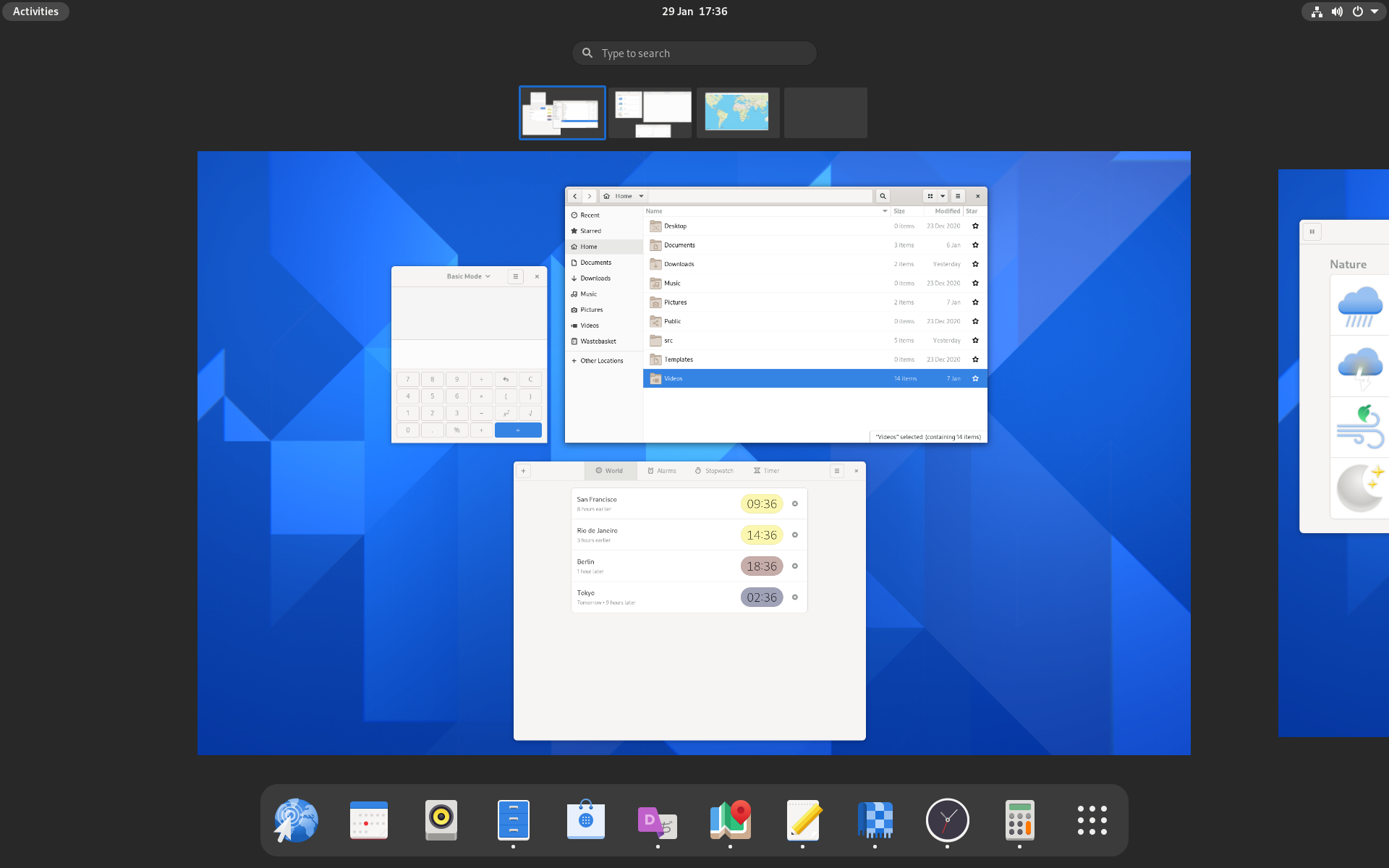Another update on the UX changes that are being worked on for GNOME 40! (See previous posts here, here, here…)
A status update
First off, a summary of where we are. Development work has been proceeding apace, and the main batch of changes are currently in the process of being merged into master. Other polish changes are being queued up alongside this, ready to be merged.
This work has primarily been undertaken by Georges Stravacas, with assistance from Florian Müllner. Georges has even been doing live coding sessions, where you can see him do the work in real time!
We currently have about two weeks until UI freeze. This means that, once the major changes have been merged, we will have a short, intense period of polishing and bug fixing work. (If we discover issues after the freeze, there’s also the possibility of getting exceptions to land changes.)
There has been plenty of activity on the design side, too. The design team has been busy testing the development branch and dealing with issues as they have come up. We have a fairly long list of issues that we’re tracking, which we will be turning into a more accessible roadmap very shortly.
We have also been busy discussing solutions to the issues that have come up in feedback. One of the major changes to come out of that is a new workspace navigator, which has been added to the “window picker” in the Activities Overview.

Testing testing testing
We have a variety of methods available for people to test the new design, and invite everyone who is interested to try it out. Once the changes have landed in master will be a great time to file issues.
Current testing methods include:
Run a prebuilt VM image in Boxes
Felipe Borges has done a great job creating a VM image containing the changes, which can be downloaded and run in Boxes. To do this:
- Download the image
- Extract the downloaded
.qcow2.gzfile (from Files, right click on the file and click Extract Here) - Open Boxes
- Press the add (+) button, then select Create a virtual machine…
- Scroll down to Operating System Image File – press that, then select the
.qcow2file that was extracted - At the next step, click the Template entry and select Fedora 33. Then click Next.
- At the next Review and Create step, click Create to make the VM
- When the VM has finished installing and has booted, log in to the gnome user account. The password is “gnome”.
These images are based on Fedora using a COPR repository. They can be updated using DNF to get the latest design and development changes.
Use the testing COPR from Fedora 33
The main development branches for the changes have been made available as a COPR repository for Fedora 33. This can be used with an existing Fedora 33 install, either in a VM or on bare metal.
The obvious warning applies here – this is development software with limited testing, and you will be swapping out key desktop components. You should be prepared for your system to break and have an idea of how to recover should this happen. This is definitely a case of proceeding at your own risk.
Using the COPR is simply a matter of adding it and updating with the following commands:
sudo dnf copr enable haeckerfelix/gnome-shell-40sudo dnf update
Then reboot.
Build the branch in a virtual machine
If you want to track the latest changes in real time, or want to help with development, this could be a good option for you, and doesn’t take a huge amount of work. Instructions can be found here.
What next?
Everyone is welcome to test the design using the methods described above. Note that, at the moment, all of these involve using the development branch which will not be identical to the final implementation. The branch is primarily useful for testing the general design and giving general feedback to the design team. Once more work has landed in master, that will be the time to file specific bugs.
If other testing methods become available, please let us know and we’ll add references to them in the blog post.
